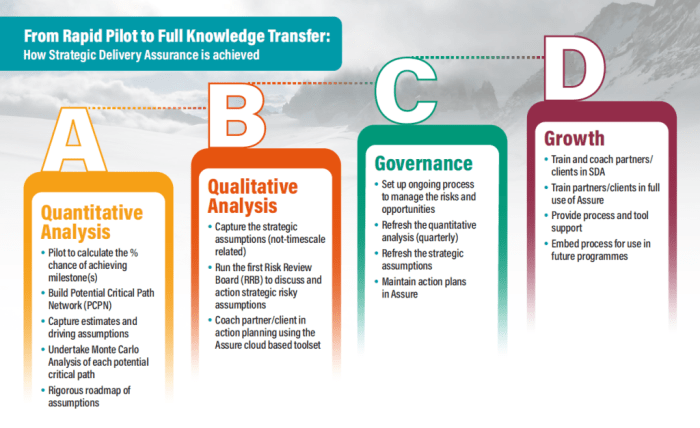Risk management for small unit leaders – Risk management is a crucial aspect of leadership for small unit leaders operating in diverse and challenging environments. By understanding and implementing effective risk management strategies, these leaders can navigate uncertainties, protect their teams, and accomplish mission objectives with greater efficiency and safety.
This comprehensive guide delves into the principles, practices, and tools of risk management for small unit leaders, providing a roadmap for enhancing decision-making, mitigating threats, and fostering a culture of risk awareness within their units.
1. Risk Assessment for Small Unit Leaders
Risk assessment is a critical component of decision-making for small unit leaders in various operational environments. It involves identifying, analyzing, and evaluating potential risks to ensure the safety and effectiveness of their units.
Step-by-Step Process for Conducting Risk Assessments in the Field
- Identify potential risks:Conduct a thorough analysis of the operational environment, mission objectives, and unit capabilities.
- Analyze and assess risks:Evaluate the likelihood and potential impact of each risk, considering factors such as terrain, weather, enemy capabilities, and time constraints.
- Develop risk mitigation strategies:Determine appropriate measures to reduce or eliminate risks, considering resources, capabilities, and constraints.
- Monitor and review risks:Continuously monitor the operational environment and adjust risk assessments and mitigation strategies as needed.
Common Pitfalls and Challenges in Risk Assessment for Small Unit Leaders
- Overestimating or underestimating risks
- Failing to consider all potential risks
- Not involving subordinates in the risk assessment process
- Ignoring changes in the operational environment
2. Risk Mitigation Strategies: Risk Management For Small Unit Leaders

Small unit leaders have various risk mitigation strategies at their disposal, each with its own pros and cons:
Diversification
- Pros:Reduces risk by spreading resources and capabilities across different areas or tasks.
- Cons:Can lead to a lack of focus and expertise in specific areas.
Hedging
- Pros:Reduces risk by entering into agreements that offset potential losses.
- Cons:Can be expensive and complex to implement.
Insurance
- Pros:Provides financial protection against specific risks.
- Cons:Can be expensive and may not cover all potential risks.
3. Decision-Making Under Risk

Small unit leaders face unique cognitive and psychological challenges when making decisions under risk:
Cognitive Factors
- Limited information and time constraints:Leaders often have incomplete information and must make decisions quickly.
- Confirmation bias:Tendency to seek information that confirms existing beliefs, leading to biased decision-making.
Psychological Factors
- Risk aversion:Tendency to avoid risks, even when potential benefits outweigh the risks.
- Overconfidence:Belief in one’s own abilities, leading to underestimation of risks.
Techniques and Tools to Improve Decision-Making
- Scenario planning:Developing and analyzing multiple possible outcomes.
- Cost-benefit analysis:Weighing the potential costs and benefits of different options.
- Decision matrix:Comparing options based on multiple criteria.
4. Communication and Coordination in Risk Management

Effective communication and coordination are essential for successful risk management in small units:
Communicating Risk Information
- Upward communication:Reporting risks to superiors and higher headquarters.
- Downward communication:Informing subordinates and other stakeholders about risks.
- Lateral communication:Sharing risk information with other units and organizations.
Coordinating Risk Mitigation Efforts
- Interagency coordination:Collaborating with other agencies and organizations involved in risk management.
- Multidisciplinary coordination:Involving experts from different fields, such as intelligence, logistics, and medical.
- Technology-enabled coordination:Using communication and information-sharing platforms.
5. Risk Management Training and Education

Continuous training and education are vital for enhancing the risk management capabilities of small unit leaders:
Key Components of Training Programs, Risk management for small unit leaders
- Risk assessment techniques:Identifying, analyzing, and evaluating risks.
- Risk mitigation strategies:Developing and implementing effective risk mitigation measures.
- Decision-making under risk:Cognitive and psychological factors influencing decision-making.
- Communication and coordination:Communicating risk information and coordinating risk mitigation efforts.
Innovative Training Methods and Resources
- Simulation-based training:Providing realistic and immersive training environments.
- Case studies and best practices:Sharing lessons learned and successful risk management approaches.
- Online learning platforms:Delivering flexible and accessible training opportunities.
Q&A
What are the key components of risk assessment for small unit leaders?
Risk assessment involves identifying potential hazards, assessing their likelihood and impact, and determining appropriate mitigation measures.
How can small unit leaders effectively communicate risk information?
Clear and concise communication is essential. Leaders should use multiple channels, such as briefings, written reports, and face-to-face discussions, to convey risk information to superiors, subordinates, and other stakeholders.
What is the role of training and education in risk management for small unit leaders?
Training and education are crucial for developing leaders’ risk management skills. Programs should focus on risk assessment techniques, mitigation strategies, decision-making under uncertainty, and effective communication.